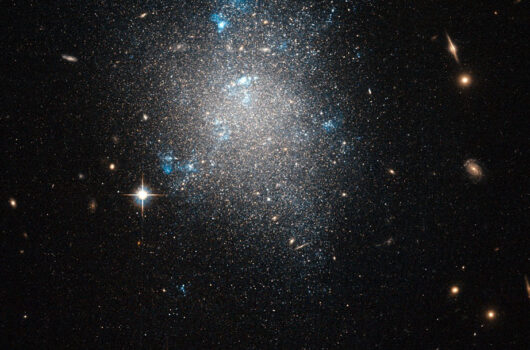AT2017gfo: Bayesian inference and model selection of multi-component kilonovae and constraints on the neutron star equation of state
AT2017gfo: Bayesian inference and model selection of multi-component kilonovae and constraints on the neutron star equation of state
View
Abstract
The joint detection of the gravitational wave GW170817, of the short ![]() -ray burst GRB170817A and of the kilonova AT2017gfo, generated by the the binary neutron star merger observed on August 17, 2017, is a milestone in multimessenger astronomy and provides new constraints on the neutron star equation of state. We perform Bayesian inference and model selection on AT2017gfo using semi-analytical, multi-components models that also account for non-spherical ejecta. Observational data favor anisotropic geometries to spherically symmetric profiles, with a log-Bayes’ factor of
-ray burst GRB170817A and of the kilonova AT2017gfo, generated by the the binary neutron star merger observed on August 17, 2017, is a milestone in multimessenger astronomy and provides new constraints on the neutron star equation of state. We perform Bayesian inference and model selection on AT2017gfo using semi-analytical, multi-components models that also account for non-spherical ejecta. Observational data favor anisotropic geometries to spherically symmetric profiles, with a log-Bayes’ factor of ![]() , and favor multi-component models against single-component ones. The best fitting model is an anisotropic three-component composed of dynamical ejecta plus neutrino and viscous winds. Using the dynamical ejecta parameters inferred from the best-fitting model and numerical-relativity relations connecting the ejecta properties to the binary properties, we constrain the binary mass ratio to
, and favor multi-component models against single-component ones. The best fitting model is an anisotropic three-component composed of dynamical ejecta plus neutrino and viscous winds. Using the dynamical ejecta parameters inferred from the best-fitting model and numerical-relativity relations connecting the ejecta properties to the binary properties, we constrain the binary mass ratio to ![]() and the reduced tidal parameter to
and the reduced tidal parameter to ![]() . Finally, we combine the predictions from AT2017gfo with those from GW170817, constraining the radius of a neutron star of
. Finally, we combine the predictions from AT2017gfo with those from GW170817, constraining the radius of a neutron star of ![]() to
to ![]() (
(![]() level). This prediction could be further strengthened by improving kilonova models with numerical-relativity information.
level). This prediction could be further strengthened by improving kilonova models with numerical-relativity information.



